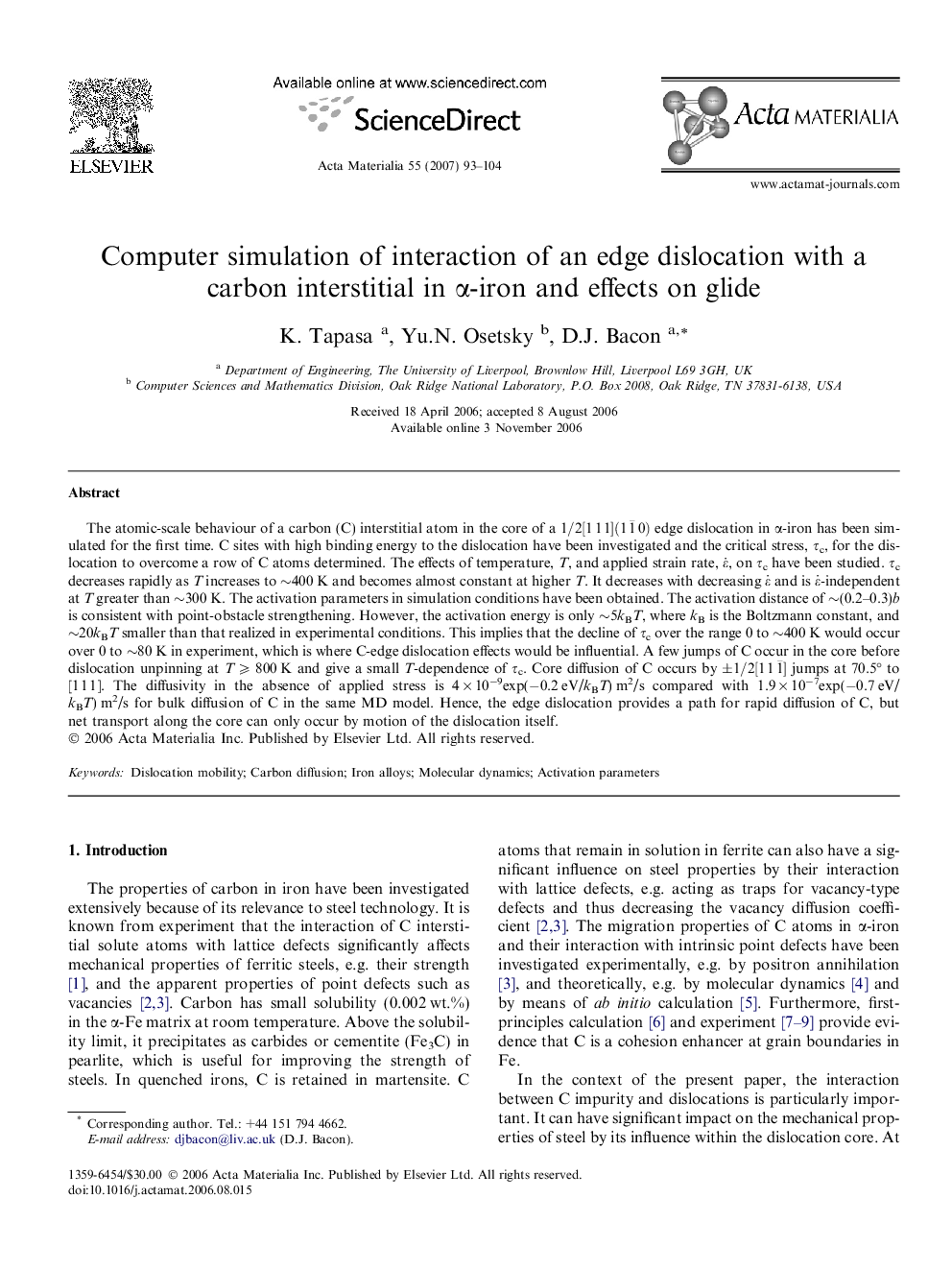| Article ID | Journal | Published Year | Pages | File Type |
|---|---|---|---|---|
| 1449892 | Acta Materialia | 2007 | 12 Pages |
The atomic-scale behaviour of a carbon (C) interstitial atom in the core of a 1/2[111](11¯0) edge dislocation in α-iron has been simulated for the first time. C sites with high binding energy to the dislocation have been investigated and the critical stress, τc, for the dislocation to overcome a row of C atoms determined. The effects of temperature, T , and applied strain rate, ε˙, on τc have been studied. τc decreases rapidly as T increases to ∼400 K and becomes almost constant at higher T . It decreases with decreasing ε˙ and is ε˙-independent at T greater than ∼300 K. The activation parameters in simulation conditions have been obtained. The activation distance of ∼(0.2–0.3)b is consistent with point-obstacle strengthening. However, the activation energy is only ∼5kBT, where kB is the Boltzmann constant, and ∼20kBT smaller than that realized in experimental conditions. This implies that the decline of τc over the range 0 to ∼400 K would occur over 0 to ∼80 K in experiment, which is where C-edge dislocation effects would be influential. A few jumps of C occur in the core before dislocation unpinning at T ⩾ 800 K and give a small T-dependence of τc. Core diffusion of C occurs by ±1/2[111¯] jumps at 70.5° to [1 1 1]. The diffusivity in the absence of applied stress is 4 × 10−9exp(−0.2 eV/kBT) m2/s compared with 1.9 × 10−7exp(−0.7 eV/kBT) m2/s for bulk diffusion of C in the same MD model. Hence, the edge dislocation provides a path for rapid diffusion of C, but net transport along the core can only occur by motion of the dislocation itself.
